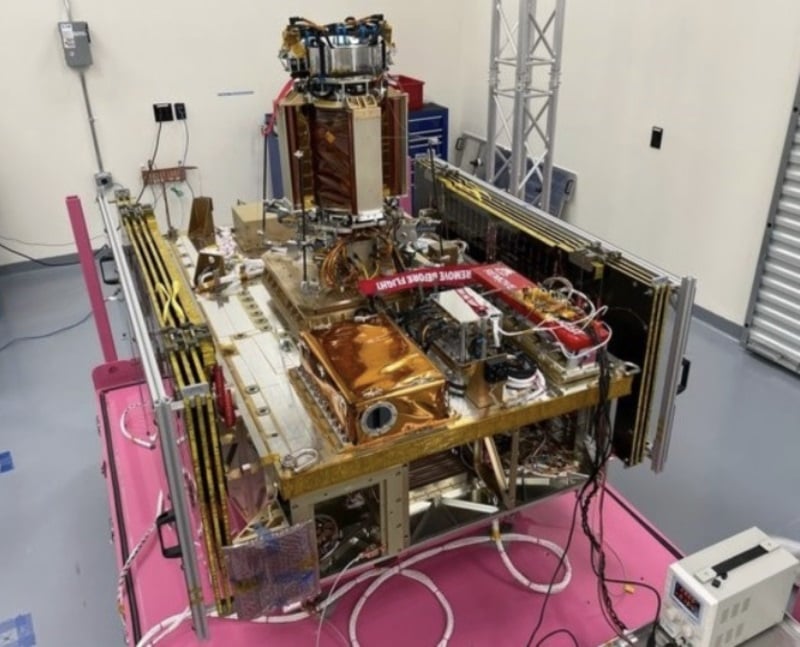
For the first time in history, solar energy was transmitted from space to Earth: Why is it important?
Scientists continue to search for clean and sustainable energy sources. One promising direction in this endeavor is the development of technologies that can capture solar energy directly in space and then transmit it to Earth. Recently, a team of scientists from the California Institute of Technology (Caltech) has achieved some success in this area by collecting energy using an orbital satellite and transmitting it to Earth.
This accomplishment is part of the Space Solar Power Demonstration (SSPD-1) mission, carried out by the Space Solar Power Project (SSPP) team at Caltech in collaboration with Indie Semiconductor Inc., NASA's Jet Propulsion Laboratory (JPL), Amazon Web Services, and the startup GuRu Wireless, a subsidiary of Caltech. Their joint efforts allowed scientists to collect energy in Earth's orbit and transmit it to the planet's surface, marking a significant achievement. Details of their work have been published in a research article available on arXiv.
While on Earth, humans have learned to harness solar light for energy, even the most advanced technologies have limitations. For example, on a cloudy, rainy day, the power of solar panels can drop by 25%, and they cannot generate energy during nighttime hours. In contrast, solar panels in orbit can continuously generate energy if oriented to always receive sunlight. Now, scientists need to develop a reliable method for transmitting energy from orbit to Earth, where it can be used to power businesses, homes, and other facilities.

The experiment conducted by scientists became possible thanks to the Microwave Array for Power-transfer Low-orbit Experiment (MAPLE) device, which facilitated the transmission of energy from space to Earth. This device is designed as a small 6U CubeSat satellite capable of capturing solar energy using photovoltaic elements. MAPLE then utilizes rectifying antenna arrays to convert solar energy into radiofrequency energy. Subsequently, a beam of radiofrequency energy is synthesized and transmitted to Earth. The equipment for receiving and converting the signal into direct current, as well as for tracking MAPLE's position, is located on the roof of the Moore Laboratory at Caltech.
The mission began on January 3, 2023, when the research satellite was delivered to a low Earth orbit using the SpaceX Falcon 9 rocket. Two months later, scientists began experiments with MAPLE, and the mission was deemed successful. In the future, researchers plan to create a constellation of satellites similar to SPPD-1, capable of transmitting energy to Earth to power 10,000 households. However, this is still a distant goal, as currently, MAPLE captures between 175 to 251 mW of energy in space, and only 1 mW reaches the ground station.
- Related News
- Perseverance finds rock on Mars with signs of life on Earth (photo)
- On 25th anniversary of Chandra telescope, NASA released 25 photos previously unseen by the public
- Rare intermediate-mass black hole has been discovered at the center of our galaxy
- Stone "snowman" and pure sulfur crystals on Mars։ Remarkable discoveries by Perseverance and Curiosity
- When will humanity settle on Mars? Interview with Gernot Grömer
- TESS telescope discovers super-hot exoplanet the size of Neptune
- Most read
month
week
day
- Buyers massively complain about Samsung's Galaxy Buds 3 and Buds 3 Pro headphone, even finding hair in the box 821
- With today's mortgage interest rates, banks simply cannot sell products in 2025: Interview with Vardan Marutyan 812
- Ants and bees 'taught' tiny drones to navigate without GPS, beacons or lidars 676
- Samsung will release Galaxy Tab S10+ and Ultra tablets and Galaxy Z Fold 6 Slim and Galaxy w25 smartphones in October 641
- Mass production of iPhone SE 4 will begin this October, with sales starting in 2025 602
- Insider unveils specs of all smartphones of iPhone 17 series, including the 17 Slim 599
- Telegram's monthly active audience reaches 950 million 585
- What dangers can feature phones from unknown manufacturers conceal? 558
- For the first time in history, iPhone will get a Samsung camera 555
- What are the problems in the construction industry? Interview with Vardan Marutyan 550
- Archive
